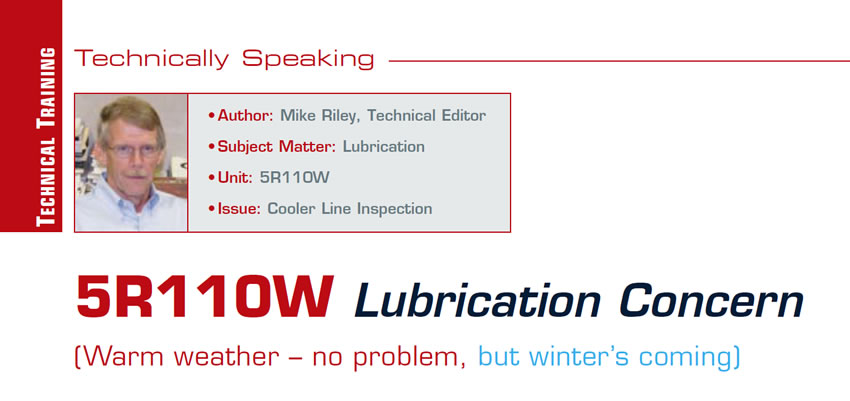Toyota Camry U250E Harsh Coast Down
Although the transmission upshifted well and had a good lockup apply, at times when the vehicle came to a stop a bump would occur that felt like a rear end collision. The speed at which it came to a stop would dictate whether the transmission would downshift smooth or harsh. Normally, when coming to a regular stop, everything functioned well; however, coming to a quick stop was a different matter.
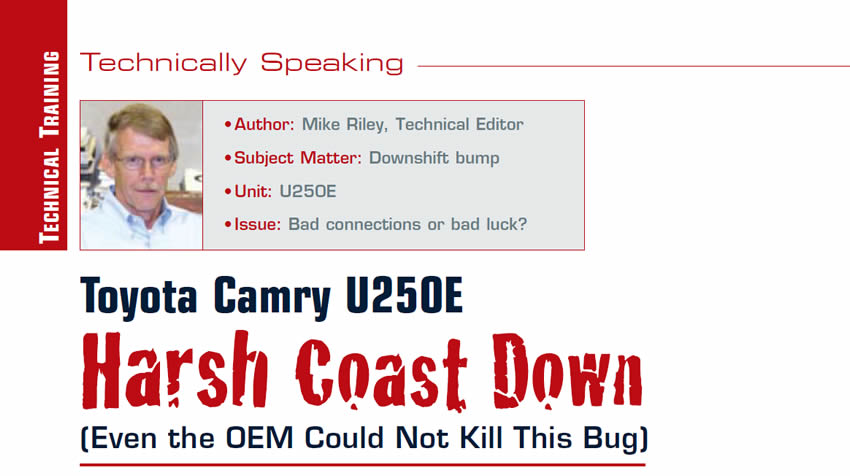
CD4E Failure Reveals Upgrade (Some Things Never Change – Some Do)
The CD4E was launched in 1994 by Ford and Mazda in the Probe and 626, followed by the Contour/Mystique in 1995. Later on, there were other vehicles that came equipped with the CD4E, more important the 2001-up Ford Escape.

ZF9HP48 FWD Nine Speed, Part 2
ZFhas outpaced other transmission manufacturers with the nine-speed ZF9HP48 (Chrysler 948TE) FWD. The unit is extremely compact, considering what it does. Unlike the 8HP family, the 9HP is not a mechatronic design. The 9HP uses a torque converter; however, a hybrid version, the 9P48H, will utilize an electric motor instead. The unit, which weighs in at nearly 200 lbs., can be equipped with a mechanical or electronic pack arrangement.
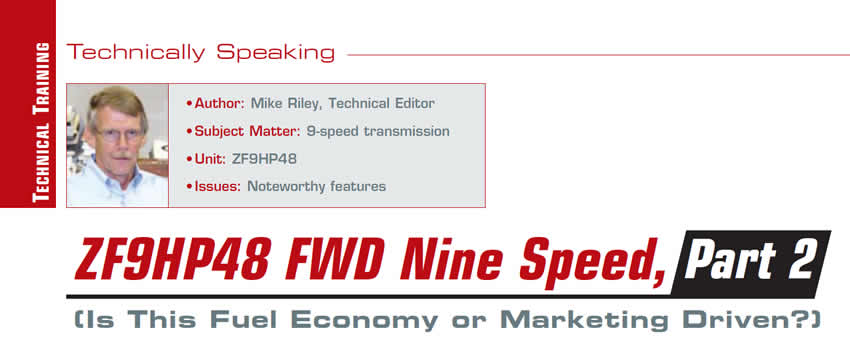
ZF9HP48 FWD Nine Speed, Part 1 (Is This Fuel Economy or Marketing Driven?)
So far, the leading entry for the “Schwinn Got Gears 10-Speed” contest is from the German transmission manufacturer ZF. With the release of the ZF9HP48 (Chrysler 948TE) FWD nine speed, ZF has edged out the other guys, at least for the moment. Supposedly, a grand champion 10 speed is just around the corner, and won’t that be wonderful.
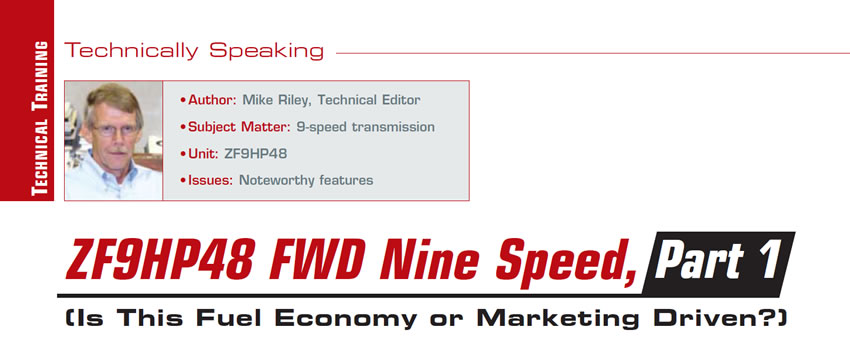
Mazda CX7 Shift Issues with DTC (Component Appearance May Be Deceiving)
A customer arrived at the shop driving a 2007 Mazda CX7 equipped with 2.3L engine and a six-speed automatic. Depending on year, a Mazda CX7 could have several different transmission types from four-speed to six, but this model has an Aisin TF81SC (AW6A-EL).
The customer stated that recently the transmission was acting a bit strange and that the check-engine light would come on as well. The vehicle was taken for a test drive and sure enough a problem existed: erratic shifting. At times though, the unit seemed to work fairly well, which meant at least all of the basics were there.
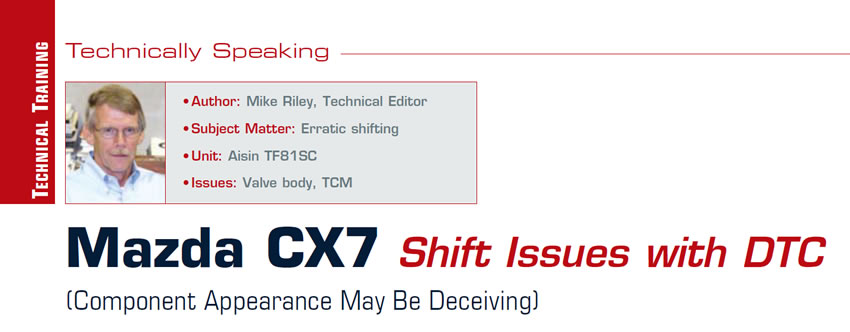
Transmissions with Mechatronics – TEHCM
Beyond the issues of handheld tester capabilities relating to mechatronics is the current status of dynos and valve-body testers. On a dyno, the complete transmission is tested using the required software, as it is with a valve-body tester. The VB tester, however, has the additional challenge of a base plate that the valve-body bolts to.
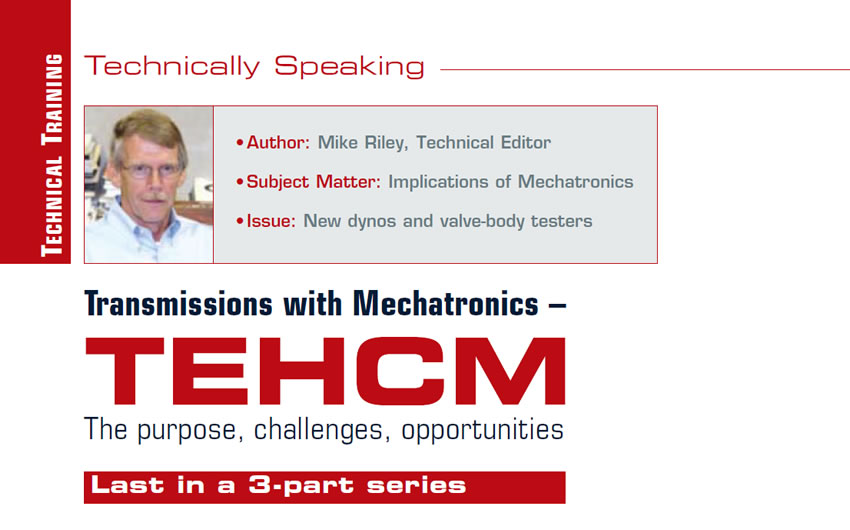
Transmissions with Mechatronics – TEHCM: Part II
In addition to dealing with the transmission evolutionary variables mentioned in Part I of the series, the transmission repair industry must contend with much more currently, as well as future changes that will occur.
Despite the efforts of organizations like SAE (Society of Automotive Engineers), the OEM’s have failed to standardize certain aspects of vehicle operations. Several different protocols exist that the OEMs use for OBD-II compliance. For a period of time, there were five basic protocols used by most OEMs to control their vehicles. Today there are a lot of different protocols to control an array of components from powertrain to airbags to audio/visual.
Diagnostics, testing equipment and repair will vary based upon the system, which is why it’s important to know what a particular scanner can accommodate.
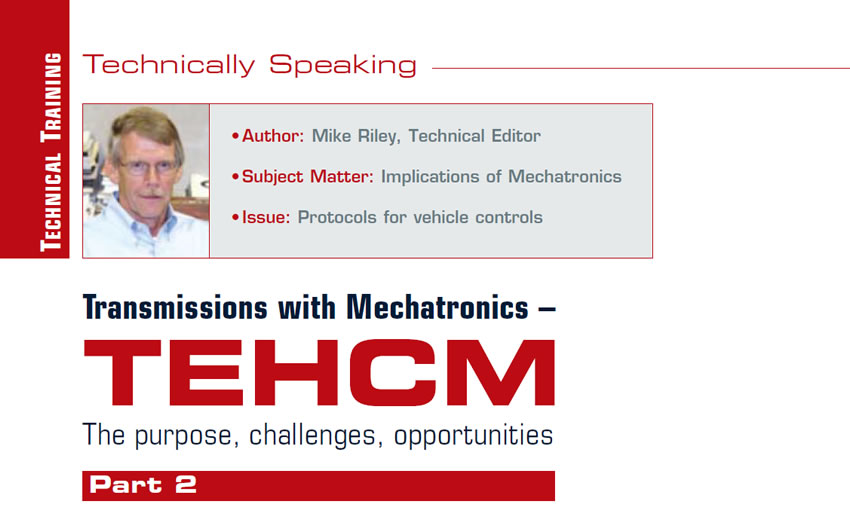
Transmissions with Mechatronics – TEHCM
For decades, the transmission repair industry has dealt with unending changes, ranging from weight (cast iron versus aluminum cases/components), fluids (natural versus synthetic blends) and sealing components to unit controls/calibrations.
Due to the ’70s oil fiascoes, the push for more gears, lighter units, less torque converter slippage, etc., all to enhance vehicle fuel economy and engine performance, has been growing exponentially over time. Add in a multitude of OE manufacturers and transmission designs, and the aftermarket repair industry has been faced with overcoming various obstacles just to repair a transmission.
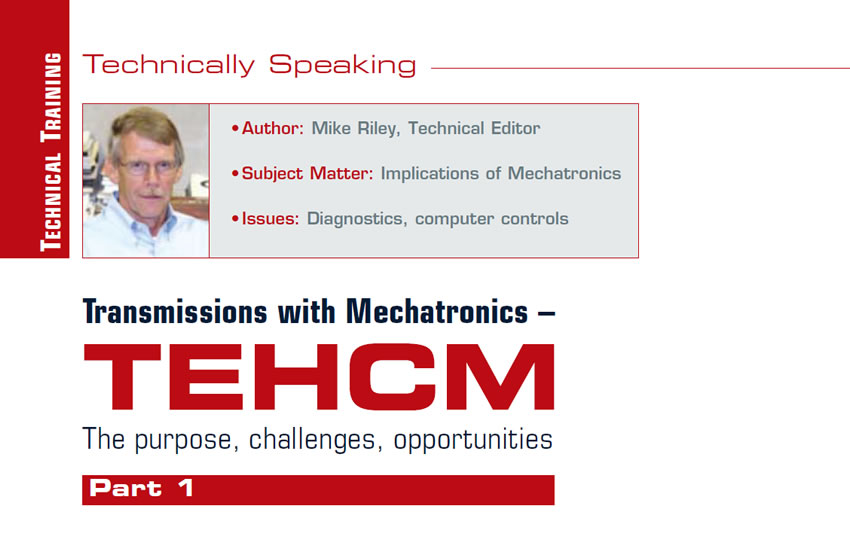
(Avoid a Square Peg in a Round Hole)
Who knew back in 1989 when the E4OD was launched what the time-frame footprint would be or how many changes would occur, let alone that it would grow into a five speed automatic?
For the repair industry, the big RWD family of transmissions has been pretty profitable due to failures, but at times somewhat troublesome due to rebuilding issues and component upgrades. Some upgrades have been fairly straightforward and inexpensive while others were more complex and costly. The four speeds certainly had modifications and upgrades; however, those models pale in comparison to the five speeds.
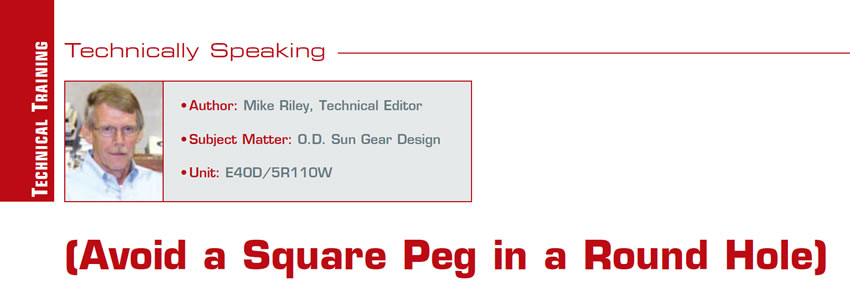
Ford Fusion Harsh 5th Gear (Avoiding: Failure to Communicate)
A customer with a 2010 Ford Fusion was experiencing erratic harsh upshifts into 5th and sometimes 6th gear. The vehicle was equipped with a 3.0L engine, 6F35 transmission and had 58,000 miles on it. There were no trouble codes; however, the problem was getting progressively worse. The other gear ranges seemed okay and the fluid was in fairly good condition.
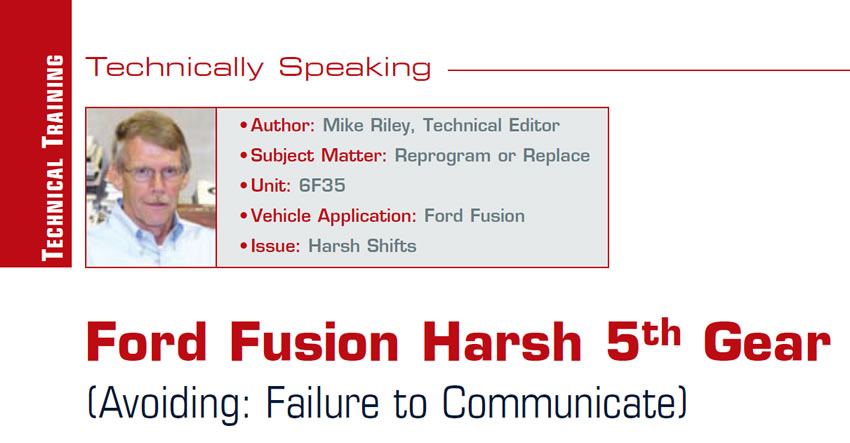
Toyota Flex Lock Up Converter (A Rose by any other Name)
Although one of the first lock-up torque converters to be used in an automatic transmission was in a Packard Ultramatic back in the fifties, lock-ups were just not that popular. Transmissions back then either used a fluid coupling or an “open” torque converter.
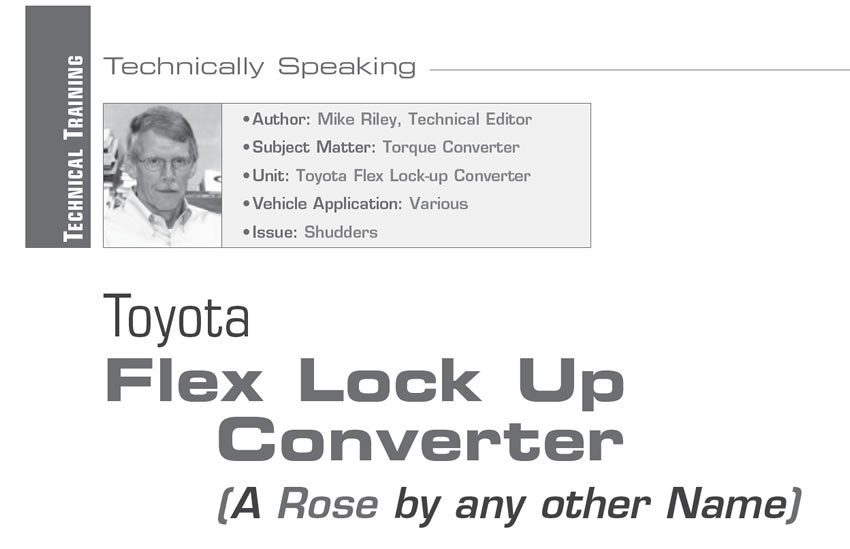
5R110W Lubrication Concern (Warm weather – no problem, but winter’s coming)
We all know that certain transmission models exhibit problems based upon temperature levels. Most of the time, heat is the overriding factor, but in this installment of Technically Speaking, we’re going to look at models which are more susceptible to cold.
Later-model 5R110W transmissions could fit into this cold-temperature column; however, it would be prudent to inspect any 5R110W, regardless of the model year. When Ford launched the 5R110W in 2003, a unique cooler-line filtration system was developed and used for several years. Instead of a normal inline filter that merely splices into the pressure or return cooler line, the 5R110W used a bypass filtration design.
